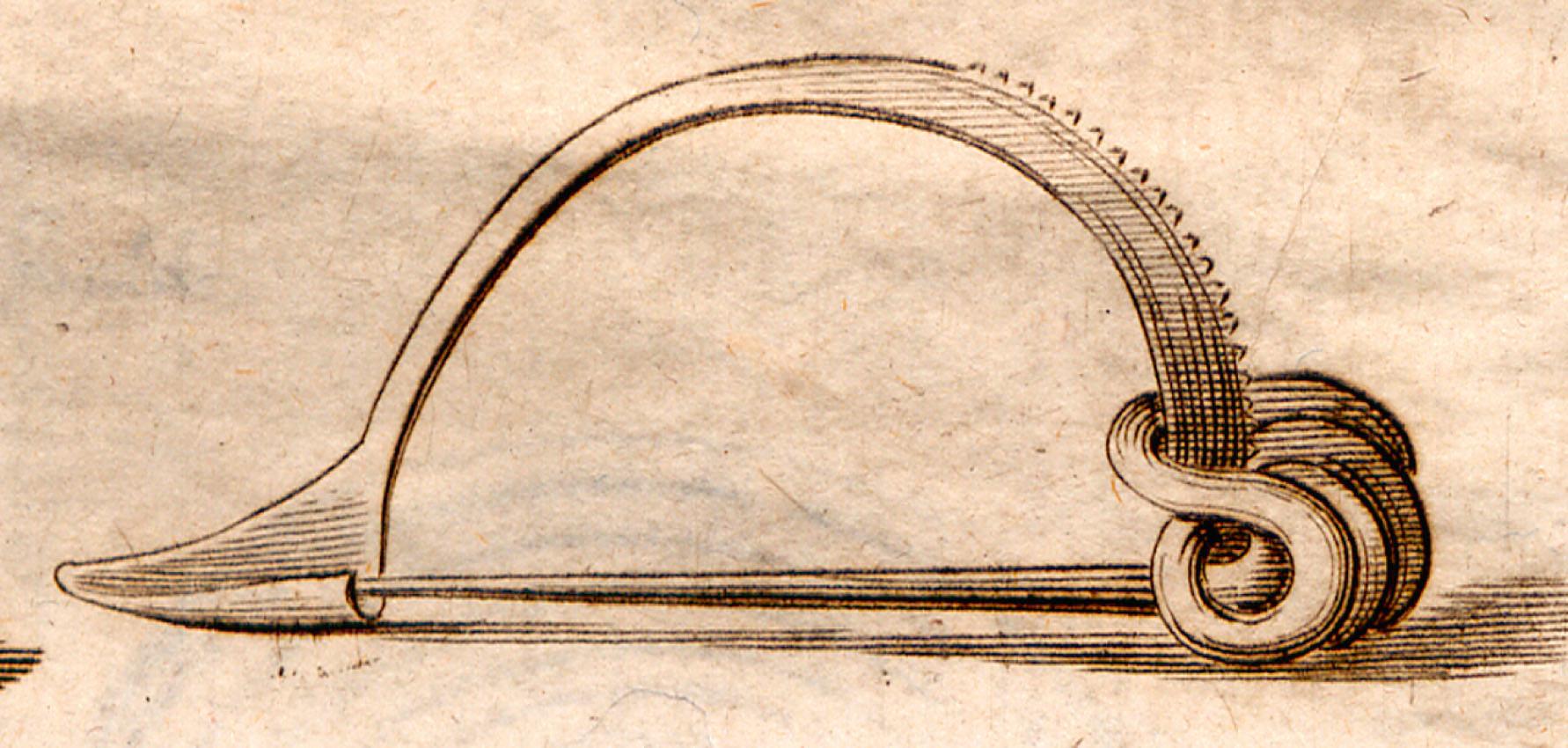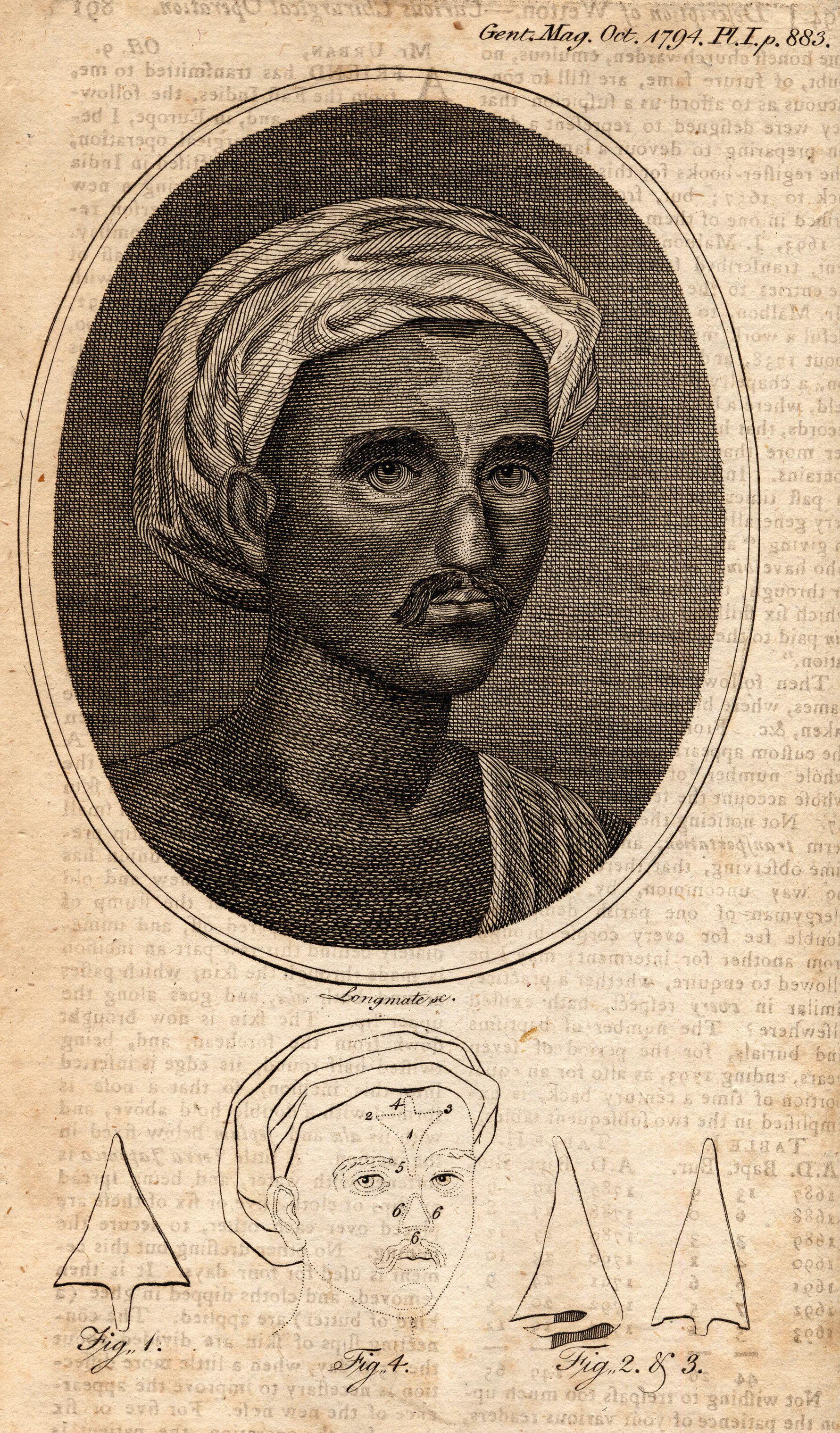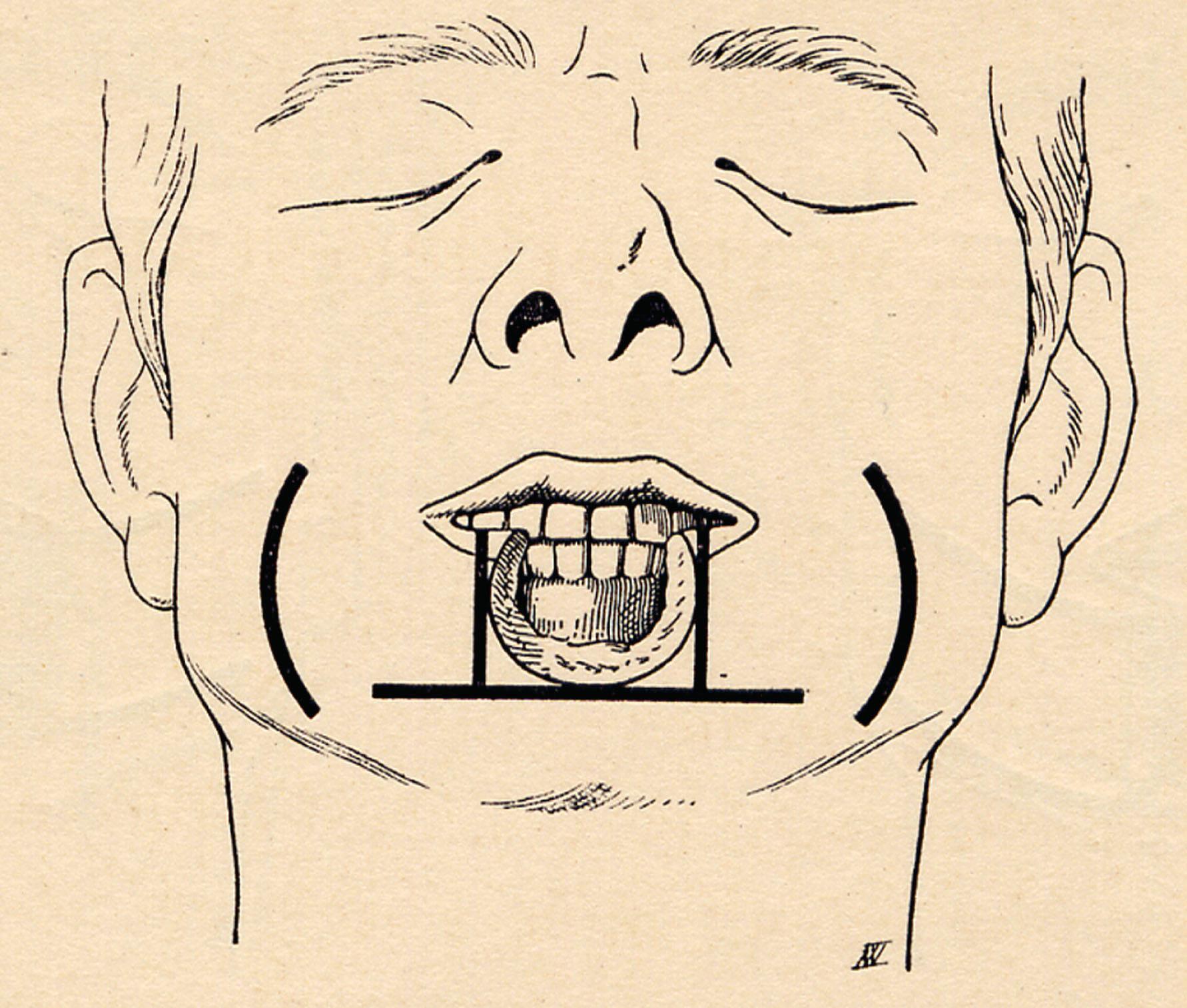Physical Address
304 North Cardinal St.
Dorchester Center, MA 02124
Closure of wounds represents one of the first gestures of reparative surgery.
History shows that almost every possible local flap has been described in the past and that the ingenuity of plastic surgeons was unlimited.
The lesson drawn from history reveals that the so-called new flaps are variations of what has already been published.
We have to be humble and recognize that “nothing is new under the sun”.
In 1597, the Bolognese Gaspare Tagliacozzi (1545–1597), considered the founder of plastic surgery, gave the following definition of our discipline: plastic surgery is the art devoted to “restore what Nature has given and chance has taken away. The main purpose of this procedure is not the restoration of the original beauty of the face, but rather the rehabilitation of the part in question”, in other terms repair of congenital or acquired defects, restoration of an appearance as close as possible to normality, but also improvement of functional impairment. The term “plastic” comes from the Greek πλαστικóς ( plasticós ), moldable.
The ancient origin of plastic surgery relates to the healing of wounds. Management of wounds caused by stones, weapons, arrows, and animal bites goes back millions of years, when primitive humans had to face four major problems: (1) closing post-traumatic defects; (2) bleeding; (3) infection; and (4) pain. Attempts to transform a defect that heals slowly by secondary intention into one healing quicker by primary intention may well account for the first example of a reparative procedure.
However, this must have been quite complex without appropriate tools, in the presence of hemorrhage and without anesthesia. There is no documentation of stitching of wounds among primitive people. We may extrapolate from what was reported in ancient Hindu medicine, where wound edges were sewn with simple means like fibers or strips of tendon, or pinned together using insect mandibles. Later, bronze pins were used ( Fig. 2.1 ).

We are well informed about Egyptian surgery thanks to the Edwin Smith papyrus, the most ancient medical text. The papyrus is a later transcription (about 1650 BCE) of an original manuscript dating from the Old Kingdom (between 3000 and 2500 BCE). It describes 48 surgical cases, including wounds, fractures, dislocations, sores, and tumors, and suggests their potential management. Fresh wounds were treated conservatively with the application of grease and honey using linen and swabs. Adhesive strips of cloth, stitches or a combination of clamp and stitches were advocated to bring together the margins of the wound. A surgical knife was never mentioned, as wounds already existed in the cases presented. Treatment of nasal fractures is accurately explained. First, clots should be removed from the inside of the nostrils, then the bony fragments repositioned; two stiff rolls of linen were applied externally “by which the nose is held fast” and finally “two plugs of linen saturated with grease placed into the nostrils”.
Mesopotamia is the region between the rivers Tigris and Euphrates (now approximately Iraq), cradle of the Sumerian civilization. Medicine was well developed, although strongly influenced by astrology and divination. During excavations of the Nineveh palace, a great library containing more than 30,000 clay tablets with cuneiform inscriptions was discovered, 800 of them of a medical nature. They were written about 600 BCE, although the text dates from around 2000 BCE. A few of them deal with wound healing or congenital anomalies. “If a man is sick with a blow on the cheek, pound together turpentine, tamarisk, daisy, flour of Inninnu […] mix in milk and beer in a small copper pan; spread on skin and he shall recover.” Another tablet suggests the use of a dressing with oil for an open wound.
Monsters (congenital malformations) had a key role in predicting future events and in determining their course. “When a woman gives birth to an infant […] whose nostrils are absent, the country will be in affliction, and the house of the man ruined; that has no tongue the house of the man will be ruined; that has no lips affliction will strike the land and the house of the man will be destroyed.” Interestingly, surgery is never mentioned in clay tablets, although surgery was certainly performed. In the King Hammurabi Code, dating from about 1700 BCE, surgical malpractice was recognized with precise laws: “If a physician carried out a major operation on a seignior with a bronze lancet and has caused the seignior's death or he opened the eye socket of a seignior and has destroyed the seignior eye, they shall cut off his hand.” “If a physician carried out a major operation on a commoner's slave with a bronze lancet and has caused [his] death, he shall make good slave for slave.”
In the Samhita, a Sanskrit text on surgery attributed to Sushruta and possibly dating 600 BCE, the description of several reconstructive procedures related to the face are discussed. In particular, management of eyelid anomalies like entropion, trichiasis, or ingrown eyelashes and repair of the nose is reported. Certain Indian populations had the habit of cutting the nose of adulterers, thieves, and prisoners of war as a sign of humiliation. In an attempt to improve this terrible disfigurement, surgeons invented different solutions over the centuries.
Repair of the nose was carried out by the Koomas, a low caste of priests, or, according to others, a guild of potters. Local flaps, outlined in the cheek, were used, and accurate description of blunt ( yantra ) and sharp ( sastra ) instruments to perform nasal reconstruction was supplied.
When was the forehead skin used? There is no mention of it. In the second half of the seventeenth century, the Venetian adventurer Nicolò Manuzzi (1639–1717) wrote a manuscript about the Moghul empire in which an account of forehead rhinoplasty is supplied. Regrettably the manuscript, kept in the Marciana Library in Venice, was not published until 1907. Information on the forehead flap in nasal reconstruction only reached the Western world at the end of the eighteenth century, thanks to a letter signed BL, addressed to Mr. Urban, editor of the Gentleman's Magazine , and published in October 1794 ( Fig. 2.2 ).
A friend of mine has transmitted to me, from the East Indies, the following very curious and, in Europe, I believe unknown chirurgical operation, which has long been practiced in India with success; namely, affixing a new nose on a man's face.

There follows the accurate description of the two-step procedure carried out on Cowasjee, a bullock driver of the English army, who fell under the disfavor of Tippoo Sultan and had his nose amputated. It demonstrated the high level of surgery reached by the Indians in performing an operation, without anesthesia, in a very similar way to what we do nowadays.
Greek medicine was influenced by Hippocrates, the greatest physician of his time. Historians consider that Hippocrates was born on the island of Kos around the year 460 BCE, and probably trained in medicine at the Asklepieion of Kos. In ancient Greece and Rome, the Asklepieion (Latin: aesculapium ) was a healing temple, sacred to Asklepios, the Greek god of medicine. Hippocrates rejected the views of his time that illness was due to supernatural influence, possession of evil spirits, or disfavor of the gods. He based his medical practice on the direct observation of disease and on an analysis of the human body, introducing scientific methods into medicine. Hippocrates taught and practiced medicine throughout his life, traveling in various Greek regions. He established the Great School of Medicine on the island of Kos. He probably died in Larissa (Greece) at the age of 83 or 90.
About 70 medical treatises, assembled during the Alexandrian era (third century CE) were attributed to Hippocrates. They form the so-called Corpus Hippocraticum . Whether Hippocrates himself is the author of the Corpus and these works are authentic has been the matter of great dispute and controversy. The Corpus contains manuals, lectures, research, philosophical thoughts, and essays on different topics of medicine, without any logical order and even with significant contradictions among them. The works of Hippocrates were true best-sellers, reprinted numerous times over the centuries. The first printed edition of the Opera Omnia ( Complete Works ) was issued in Latin in Rome in 1525, and in Greek in Venice in 1526 by the Aldine Press.
The surgical knowledge of Hippocrates was vast. He used cauterization for the management of raw surfaces, reduced malunited fractures, and practiced cranial trephination to evacuate hematomas.
In Rome, surgery was well developed, at least judging from the rather sophisticated bronze instruments discovered in Pompei and now kept at Naples National Museum. Many were stored in traveling kits to be used by surgeons for emergency or on the battlefields.
The two most representative figures of Roman medicine were Celsus and Galen.
Aulus Cornelius Celsus (25 BCE to 50 CE) was probably not a physician, but a writer from a noble family and the author, in about 30 CE, of De Medicina ( On Medicine ) in eight volumes. In book seven, chapter nine, vessel ligature and lithotomy as well as lip closure (cleft lip or lip tumor) by means of flaps are reported. It is explained how “defects of the ears, lips and nose can be cured [ curta in auribus, labrisque ac naribus, quomodo sarciri et curare possint ]”, followed by a description of wound closure by advancement flap. “The defect should be converted into a square [ in quadratum redigere ]. Then, from the inner angles transverse incisions are made [ lineas transversas incidere ], so that the part on one side is fully divided from that on the opposite side. … After that, the tissues which have been undermined, are brought together [ in unum adducer ]”. … If this is not possible two additional semilunar incisions are made at some distance from the original [ ultra lineas, quas ante fecimus, alias duas lunatas et ad piagam conversas immittere ], but only sectioning the outer skin. … These latter incisions enable the parts to be easily brought together without using any traction” ( Fig. 2.3 ). Celsus holds a key role in the history of plastic surgery, as he is considered the earliest writer on this particular topic. He introduced the four cardinal signs of acute inflammation, “redness and swelling with heat and pain [ rubor et tumor, cum calore et dolore ]”. A copy of Celsus's manuscript was discovered in Milan in 1443, and printed for the first time in 1478 in Florence. De Medicina went through more than 50 editions.

Claudius Galen ( c . 129–201 CE) was born in Pergamon (Turkey), studied medicine at the Asklepieion (see above) in his native city and moved to Rome. He wrote about head traumas, techniques of trephination for evacuating hematomas and various types of bandaging. An excellent anatomist, he described more than 300 muscles, the seven pairs of cranial nerves and contributed to neurology, demonstrating that nerves arise from the brain or spinal cord. He observed that section of the laryngeal nerve resulted in dysphonia. For management of wounds he used sutures and cautery. Numerous works of Galen were lost, but 82 survived. Originally written in Greek, many were translated into Arabic and Latin. Galen's Opera was first printed in Latin in Venice in 1490 and in Greek in Venice in 1525 by the Aldine Press.
Oribasius (325–403 CE) wrote a collection of medical texts entitled Synagogae Medicae in which reconstructive procedures for cheek, nose, ears, and eyebrow defects are described. Paulus of Aegina (625–690 CE), surgeon and obstetrician, was the author of a medical encyclopedia ( Epitome ) in seven volumes. In Book 6, which deals with surgery, a description of tracheotomy, tonsillectomy, ectropion, upper eyelid retraction, and lip repair is supplied. “Defects [Greek, colobomata ] of the lips and ears are treated in this way. First the skin is freed on the underside. Then the edges of the wound are brought together and the callosity is removed. Finally, stitches holding the margins into position are applied.” This technique closely resembles that of Celsus.
Become a Clinical Tree membership for Full access and enjoy Unlimited articles
If you are a member. Log in here